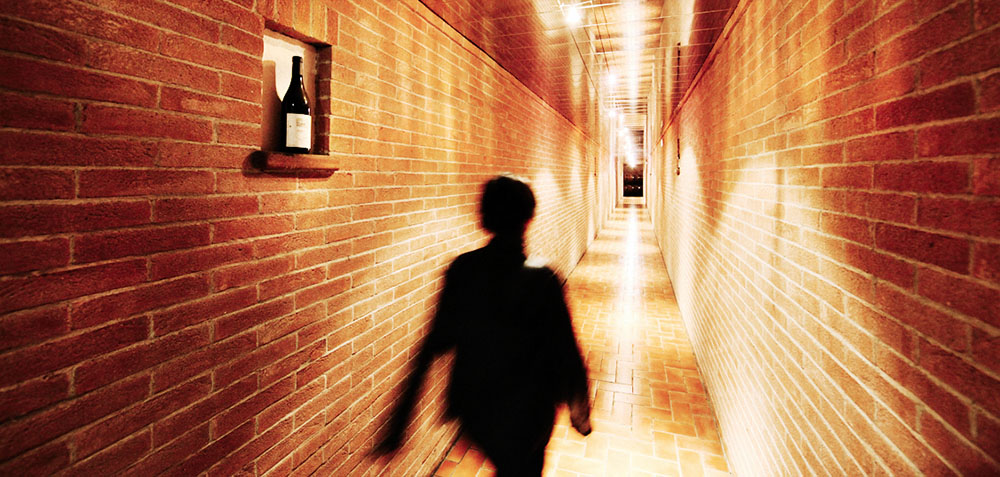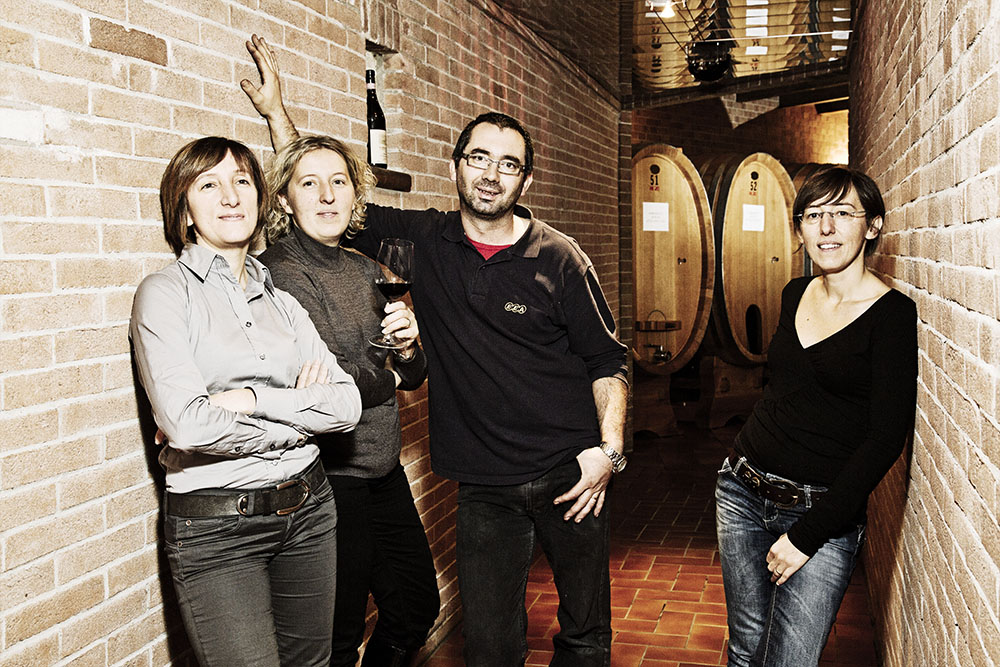
Every summer, I head to the hills of Barolo for Collisioni, an agri-rock festival mashing up music, literature and wine. As a result, I have been able to take in concerts by Sting, Elton John and Depeche Mode. Really, though, I’m there for the libations. Barolo is the headliner but the hit list includes wines from every corner of Italy — with one glaring exception, Barolo’s neighbouring region of Barbaresco. So it caused quite a stir this past summer when a troupe of Barbaresco producers sashayed into Barolo’s castle to present a tasting completely dedicated to Piedmont’s “other” great Nebbiolo wine. It was like the Anglicans taking over the Vatican.
In truth, there are a plethora of fantastic Nebbiolo-based denominations beyond Barolo. Roero, Gattinara, Boca and Lessona are all rising stars. Despite Barbaresco being better known, it is still overshadowed by the towering giant of Barolo. A third of the size, a third of the production levels and even a third of the land costs, Barbaresco counts approximately 750 hectares producing 4.8 million bottles annually with top cru sites estimated at €700,000/ha. That is, if you can actually find land for sale. While bottles don’t necessarily sell for a third of the cost of a Barolo, most Barbaresco is far less expensive. Quality is where the disparities end.
“Barbaresco is a first among equals,” pronounces author and Italian wine authority Dr. Ian D’Agata who presides over this milestone seminar. “It’s the other king of Piedmont,” he continues, refuting Barbaresco’s feminine stereotype. Both are made exclusively from Nebbiolo and they can be difficult to tell apart when tasted blind. Intense and evocatively perfumed with an assertive structure combining searing acidity and firm tannins, they are among Italy’s most complex, age-worthy wines. Distinguishing between the two, D’Agata says: “Barbaresco is more graceful in texture and typically gives a less tannic wine.”
Barbaresco’s differences start with her hills. With most vineyards sitting between 150 to 350 metres, they are lower lying, softer and less steep than Barolo’s. But they are no less stunning. Driving around the region feels like riding the ocean’s waves. The roads twist and turn to reveal one magnificent site after another, all of varying aspects. Furthermore, Barbaresco sits closer to the Tanaro River than Barolo, resulting in a gentler microclimate, yet a greater abundance of Piemonte’s signature mysterious fog.

Digging deeper, soil is another factor. Mainly of Tortonian origin, Barbaresco’s blue grey marls are rich in magnesium and manganese and tend to produce earlier maturing wines. While Barolo equally lays claim to Tortonian-era dirt as well, it also boasts a significant portion of older soils formed in the Serravallian period. Less compact and less fertile, they are associated with the unyielding wines from the Serralunga township — the epitome of Barolo’s powerful, backward image. Barbaresco’s more precocious disposition is reflected in the denomination’s aging requirements — two years as opposed to Barolo’s three.
Barbaresco and Barolo are sufficiently different that they should be considered independently, particularly when it comes to vintage. 2014 was challenging for both but Barbaresco managed to dodge the hail that devastated Barolo. It also endured less rain, with none in the weeks leading up to harvest. Barolo was not so lucky. Conversely, in the highly touted 2010 vintage, it is arguable that Barolo has the edge over Barbaresco.
Tasting Notes
Rizzi Barbaresco DOCG Nervo 2015 ($45)
Treiso’s Nervo cru is unique in Barbaresco. The soil has Serravallian elements — more sand and less clay — and the slope is impossibly steep. Gorgeous aromas of pure cherry and strawberry waft from the glass. While this wine can be a bit bony in cool years, the generous 2015 vintage has given it just enough padding to balance the nervous acidy and linear tannins. Brilliant texture, energy and brightness!
Rizzi Barbaresco DOCG Pajorè 2015 ($50)
Within the township of Treiso, Pajorè sits at lower altitudes and is closer to the Tanaro River than Nervo. The two wines are crafted in the same manner, aging in large Slavonian botte followed by concrete tanks to highlight the terroir. Richer and fleshier than the Nervo, though still focused, this wine is deliciously accessible now but that lingering finish promises at least a decade of drinking pleasure.
Adriano Marco e Vittorio Barbaresco DOCG Basarin 2015 ($35)
Basarin typically gives bigger wines, which Michela Adriano calls strong yet refined. Fragrant rose and violet intertwine with balsamic nuances. Firmly tannic with plenty of layers and a minerally finish, it will need a couple of years to come around. Excellent value!
Albino Rocca Barbaresco DOCG Ronchi 2014 ($70)
This fourth-generation estate is run by three sisters: Daniela, Monica and Paola. The family’s most representative site is Ronchi, a small, homogenous southeast-facing cru within the commune of Barbaresco. This vintage offers plenty of freshness without sacrificing complexity. Seductively earthy notes are punctuated by mint and fennel. Elegantly crafted with a tangy backbone and rather sneaky long tannins.
Colla Barbaresco DOCG Roncaglie 2014 ($60)
Roncaglie is a south-facing amphitheatre sitting on the first hill within the Barbaresco commune, right next to Gaja’s famed Costa Russi. Cinnamon and pepper offset red berries and pretty florals with fine, velvety tannins holding the palate together seamlessly.
Orlando Abrigo Barbaresco DOCG Montersino 2013 ($60)
A lesser-known but up-and-coming cru. Orlando Abrigo’s wine is aged in a combination of barriques and tonneaux for 18 months and is still showing some toasty oak. A sturdy wine that offers sweet liquorice, raspberry and smoke-tinged herbs at its core.
Ca’ del Baio Barbaresco Riserva DOCG Asili 2013 ($55)
With a southwestern exposition and compact soil, it yields deep, profound wines. Aged for a full 36 months in used barriques and a further year in the bottle, this Riserva is layered, concentrated and long with plenty of life ahead. Haunting underbrush aromas hint at truffles with notes of wild berries and fragrant herbs chiming in. Firm yet silky tannins give support to the dense succulent fruit. Truly stunning!
Rather than expounding on the differences between these equally noble peers, it is far more fascinating to explore the diversity simply within the small zone of Barbaresco. Like Barolo (and comparable to Burgundy or Bordeaux), Barbaresco is made up of separate communes — four in total. The township of Barbaresco is the most famous, having given its name to the greater region. Some of the most complete and profound Barbaresco wines hail from here. By comparison, D’Agata describes wines from the commune of Neive as bigger and fleshier whereas those from San Rocco Seno d’Elvio are “easy to understand with lots of early appeal.” Finally, Treiso is farthest from the Tanaro River, experiencing a more rigid microclimate. It also boasts some of the highest vineyards in Barbaresco, which give steelier, more austere wines.
“Nebbiolo is a grape that expresses differently depending on the vineyard site. So, to generalize, you lose a lot,” declares Claudia Cigliuti, whom I visited just prior to Collisioni. This is one of the reasons why the Barbaresco region is further broken up into 66 crus. These legally recognized subzones are officially known as Menzioni Geografiche Aggiuntive (MGA), which translates as “Additional Geographical Definitions.” Colloquially referred to as crus, this terminology is a slight misnomer. A “cru” Barbaresco is not necessarily higher quality than one that comes from an assembly of sites. Rather, it is a geographical reference and ideally the wine should be an expression of its specific site.
The side-by-side comparison of a dozen crus at Collisioni’s Barbaresco invasion bore witness to the region’s distinct terroirs. Siblings Enrico and Jole Dellapiana of the Treiso-based Rizzi estate, who spearheaded the encounter, demonstrated the distinction between terroris with their separate cru bottlings of Pajorè and Nervo. Enrico could easily be mistaken for a basketball player rather than a winemaker. And, as shooting hoops is indeed his second passion, he likens Pajorè to Lebron James and Nervo to Kevin Durant. “James, like Pajorè, plays with more excessive physical power and force combined with a big personality,” he explains. “Durant is like Nervo, great elegant and grace.” For basketball novices like myself, his sister Jole’s analogy is much more comprehensible — think Brigitte Bardot versus Audrey Hepburn. Alas, this evokes Barbaresco’s female typecasting.
I would not deign to label Barbaresco feminine for many reasons, yet the seminar left an indelible womanly impression. Aside from Enrico Dellapiana, the crew was dominated by strong, dynamic women with a contagious enthusiasm for their land, their work and wine. Valentina Grasso spoke on behalf of the Ca’ del Baio estate. She, along with her sisters Paola and Federica, represent the next generation of this 28-hectare property. They operate holistically without a strict division of responsibilities.
The choice to work at the family estate was born spontaneously, Grasso explains. “From the time we were small, we have been breathing this atmosphere of the winery and vineyard,” she says. “We always liked it so it was easy to choose to study at the oenology school.”
Like Grasso, Michela Adriano at Adriano Marco e Vittorio grew up on the family property. In her early twenties, she has been working at the estate officially since 2014. Her first highly important contribution was to establish a much needed online and social media presence for the winery but now she is learning all facets of production and the business.
“Women have always been present in wine but unfortunately were hidden. They didn’t appear as important figures,” says Adriano. “I am happy that this world is giving them the value they deserve, allowing them to emerge from the shadows.
Barbaresco is in good hands with the women — and men — currently at the helm. It also represents a savvy buy next to Barolo. I don’t expect it will fly under the radar for much longer though. Buy up while the getting is good. Besides the underrated 2014 vintage, the ripe and generous 2015 wines are currently making it onto shelves with the thrillingly nervy and precise 2016 wines hot on their heels.
